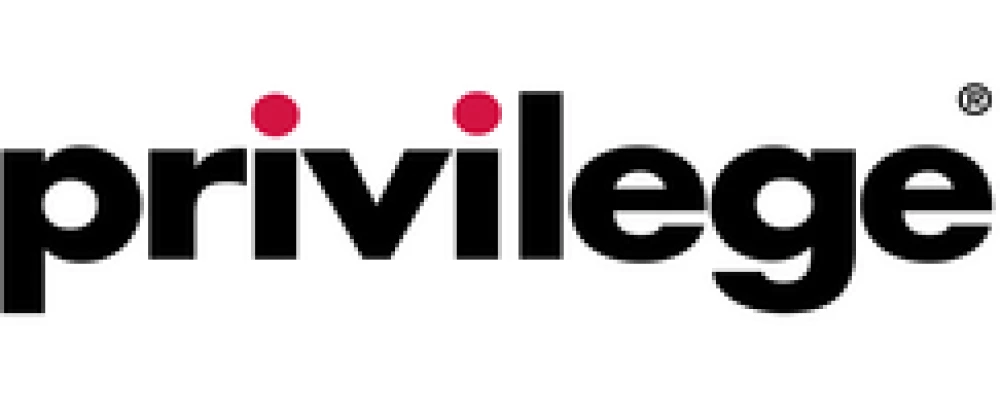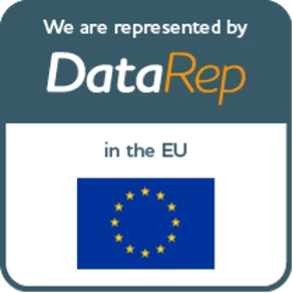Accompanied ShoppingThis form of research involves accompanying consumers as they interact with the brand – before, during and / or post-purchase.
The researcher may be required to accompany the shopper instore, online, during a phone conversation or a face-to-face meeting.
Another term for this form of market research is Accompanied Shopping Trip or AST.
During this accompaniment the shopper may be passively observed or actively questioned as the shopping activity unfolds.
This method allows researchers to gain a better understanding of the consumer’s conscious and subconscious needs, expectations and behaviours at each step of their brand journey. It also enables a comparison to be made between the experience the consumer wants or needs and the one that they feel is being provided for them by the brand.
Accompanied shopping research can lead to significant changes being made in terms of brand delivery, thereby increasing brand conversion, loyalty and ROI.
Accompanied Surfs (Online Accompanied Shops)This is the name given to the specific process of observing consumers as they interact with the brand online. It is also called Usability Testing. Observation may be passive or may involve questioning as the surf is taking place.
Accompanied Surfs may take place in consumer’s homes or in specially configured viewing facilities. Neuroscience techniques such as eye-tracking and facial coding are commonly used by to enhance the understanding of the consumer’s experience and identify issues that the consumer may find hard to verbalise.
Accompanied surfs enable B2C and B2B brands to make adjustments that significantly enhance the user experience, thereby increasing rates of satisfaction and uptake.
Ad Concept TestingAd concept testing involves the testing of initial ad concepts or more finished executions using either qualitative or quantitative approaches. Designed to assess relevance, understanding, impact, appeal and potential longevity. Can also be referred to simply as concept testing.
Ad Hoc ResearchA one-off study designed to obtain insight in relation to a specific set of questions or issues at a particular point in time. By contrast, ongoing or longitudinal research programmes are designed assess changes over time.
By its nature, most qualitative market research is ad hoc.
Ad Positioning Statement TestingThis involves initial testing of different brand positioning statements with the target audience in order to understand which will resonate most strongly in advertising.
Ad Recall ResearchThis form of research is designed to measure the recall and impact of a specific advertisement or set of advertisements by assessing the extent to which the respondent can recall the content (correctly).
Ad recall research can either be conducted on an aided or unaided basis. Aided ad recall research involves prompting respondents with regard to the ad when the focus of the research is on recall, understanding and relevance.
During unaided ad recall, respondents’ knowledge of the brand and the advert is measured without prompting. This approach provides greater scrutiny of the brand and the impact of the ad because it relies on top of mind recall.
Ad Tracking ResearchThis refers to the periodic measurements of the appeal, relevance and impact of individual advertisements over time.
Advertising Claim SubstantiationThis involves testing of product performance to prove claims made in advertising can be upheld.
Advertising Effectiveness ResearchDetermines the extent to which a specific advertisement or advertising campaign meets its marketing goals and objectives.
Advertising ResearchAdvertising research is a broad term that covers either qualitative or quantitative research undertaken on advertising that is either being developed or which has already been launched – on TV, in the cinema, or via radio, press, internet, or poster.
Advertising research is undertaken to refine strategy and / or execution, or following campaign launch to monitor the extent to which campaign objectives are being met. Post launch research can also be used to make further edits.
Advertising Tracking ResearchThe periodic measurements of the appeal, relevance and impact of individual advertisements over time.
AnimaticAn animatic is used to capture and communicate an advertising idea during its earliest stages of development. Animatics are usually sketches or cartoons that are mounted on polyboard or combined in to short videos supported by voiceovers and / or soundtracks.
Animatics are often used in advertising development research to explore the underlying creative idea or advertising content. However, their unfinished nature typically requires sensitive handing by the research agency when exposing them to respondents.
An alternative to the animatic is the stealomatic which uses audio visual cues such as film clips to represent the style of the proposed advertisement.
AnthropomorphicIn market research, this term relates to the process of assigning human like characteristics to inanimate objects, animals, or forces of nature.
Attitude, Awareness, & Usage (AAU) StudyThis form of quantitative study measures, records and compares consumer attitudes and awareness in relation to a specific brand, product or product category.
Attribute AnalysisThis is a research technique used to develop lists of characteristics, uses, or benefits in relation to a particular product category.
Audience ResearchResearch process whereby participants view movies, television programmes or advertisements.
Availability BiasIn 1973 Daniel Kahneman and Amos Tversky explored the notion that the more easily an event can be brought to mind the more likely we are to believe - and overestimate - that it can actually happen.
Availability bias has subsequently become an acceptable concept in law, political science and other relevant disciplines such as consumer marketing.
For example, when a serious motor accident receives coverage in the media, availability bias means that those exposed to the coverage are more likely to imagine such an event befalling them. This explains why people may be more willing to buy insurance after such an event has occurred.
B2B ResearchB2B Research is an abbreviated term that stands for Business to Business Research (in contrast to the term B2C research that stands for Business to Consumer research).
The term refers to any form of research undertaken with corporate customers (as opposed to consumers). It would apply, for example, to a car rental firm that wishes to conduct research with its corporate customer base or a bank that wishes to gather opinions amongst its small business customers.
B2C ResearchB2C Research is an abbreviation that stands for Business to Consumer research (in contrast to the term B2B research that stands for Business to Business research).
The term relates to any form of research where a business, company or organisation seeks the views of consumers regarding an aspect of their brand or its delivery.
Behavioural EconomicsSometimes referred to as BE for short, behavioural economics explores what causes people to make decisions that are ‘economically irrational’, thereby undermining the predictions of established economic models.
An example is heuristics:; the ‘mental shortcuts’ or rules of thumb that humans use to simplify decision-making.
BiasBias is a term that applies to both quantitative and qualitative research. In quantitative terms, it relates to a circumstance whereby a particular research finding is seen to deviate unexpectedly from the wider result(s), potentially because of the way in which the question was phrased or because an error in sampling.
In qualitative research the matter of bias is inherently more complex due to the human factor. Bias can result from the personal views and preconceptions of the moderator, the inappropriate phrasing of research questions or an unbalanced sample.
Big dataA term for very large, complex data sets (both structured and unstructured) drawn together from a wide variety of sources within an organisation (e.g. market research data and operational data).
The insight that can be drawn from big data is unparalleled but there are often significant challenges relating to the associated capture, storage and analysis, transfer and visualisation of the data concerned.
The opportunities for Big Data are endless, not just in Marketing but in science, business, the economy, medicine and government.
Big Five Personality Traits or Five Factor Model or OCEANThe Big Five personality traits are regarded as being the 5 traits that combine to form human personality. Those traits are: Openness, Conscientiousness, Extraversion, Agreeableness, Neuroticism - or OCEAN.
Biometric marketing researchBiometrics is defined as the measurement and statistical analysis of people's physical and behavioural characteristics and is mainly used for the purpose of identification (e.g. in relation to the security industry).
Certain biometrics are highly suitable for market research purposes, due to their ability to capture physiological changes that occur in response to an individual’s exposure to (for example) TV advertising, retail store and shelf layouts, new product concepts and packaging development.
These include:
Eye-tracking: this allows researchers to determine exactly what an individual is looking at and for how long – thereby helping to determine what succeeds in gaining the individual’s attention – and what doesn’t. It also enables that individual’s ‘viewing journey’ to be captured as their attention moves from one place to another
Facial coding: manufacturers claim that facial coding can code up to 2000 different facial expressions, before categorising them in relation to a much smaller and more manageable number of human emotions. Using this technology it is therefore possible to identify the (intensity of-) different emotions aroused at different points within (for example) a TV ad
Electroencephalogram (EEG): this technology measures brain activity in response to marketing stimuli like brand communications and visual media. It can be used, for example, to assess depth of engagement and / or storage in long term memory of selective parts of the targeted communications.
BPTO - Brand Price Trade OffBrand Price Trade-Off is a pricing research approach that identifies the price consumers are prepared to pay for a specific brand and the effect that different price points will have on levels of brand consumption. Because it effectively assesses the elasticity of brand pricing it can also be used as a measure of brand equity.
In Brand Price Trade Off research respondents are required to consider a basket of brands at a number of different price points. At each price point respondents select their preferred brand(s). By repeating the exercise over several price points the brand’s price elasticity can be determined.
BrandA name, term, design, symbol, or set of words, configured to create an image that identifies one seller's product or service as distinct from those of those of the competition.
Over time, that image also becomes synonymous with the brand’s features, benefits and other qualities, thereby cementing its position in the consumer’s mind.
Brand AssociationsThis term refers to the rational and / or emotional associations that consumers hold in relation to the brand, potentially derived from a range of sources including exposure to advertising, word of mouth, packaging, pricing and actual product usage.
Using a range of market research techniques these associations can be identified and their relative importance determined.
Once the rational and emotional, prompted and unprompted associations have been identified, they can be invaluable in exercises such as brand repositioning, advertising concept development and new product development.
They also have a significant role to play in the development of marketing communications and customer experience strategy formulation.
Brand EquityThis term can be used in relation to a brand’s financial worth (e.g. the financial value of the brand to its owner) or to describe the strength of the sum of brand’s positive associations in the mind of the consumer.
Brand EssenceThis refers to a distillation of the brand’s intrinsic characteristics into a short statement that encapsulates what the brand stands for. A clearly defined brand essence acts as a template in the development and execution of marketing strategy.
Brand ExtensionThe development of new products, marketed under an existing brand name.
Brand ImageHow the brand is perceived by consumers or portrayed by the brand owners.
Brand LoyaltyThe extent of consumer preference for one brand relative to others.
Brand PositioningThere is no single definition of brand positioning, but it can broadly be defined as the distinctive place a brand occupies in the target customer’s mind.
In their book Positioning: The Battle for Your Mind, Al Ries and Jack Trout offer a positioning template comprising of 3 elements:
[NAME OF BUSINESS] is [KIND OF PRODUCT OR SERVICE] for [KIND OF PEOPLE]
Using this approach, manufacturer of pasta De Cecco developed the following: De Cecco is the premium pasta for serious chefs
On the other hand, in his book ZAG, Marty Neumeier suggests a more detailed template, as follows:
What: The only [category]
How: that [differentiation characteristic]
Who: for [customer]
Where: in [geographic location]
Why: who [need state]
When: during [underlying trend]
This template resulted in the following positioning statement for the Harley brand:
The only motorcycle manufacturer
That makes big, loud motorcycles
For macho guys (and “macho wannabes”)
Mostly in the United States
Who want to join a gang of cowboys
In an era of decreasing personal freedom.
This was then distilled in to the brand tag line: American by birth. Rebel by choice.
Brand PropositionThe brand proposition or value proposition is a distillation of the brand’s most powerful benefits, also including the Unique Selling Proposition (USP).
Consider Uber’s proposition: ‘The smartest way to get around’. This is actually a neat encapsulation of a number of tangible benefits that Uber customers feel they enjoy over the customers of more traditional taxis:
One tap and a car comes directly to you
The driver knows exactly where to go
Payment is completely cashless
Brand Pyramid or Brand IcebergThe Brand Pyramid is a strategic marketing tool used to help identify and visualise the individual components of the strategic brand.
Its has a layered construction, reflecting the fact that the brand is built from the bottom up, starting with the foundations, that must be in place before additional layers may be added on top. The foundation layer is made up 'defining' insights relating to the the customer, the competition and the market place. Only when the appropriate insight is in place can the next layer be put in place. This layer typically identifies the brand attributes or features required to address the requirements identified in the foundation layer. In the next layer there is benefits, linking back to the attributes. These are followed by values, personality, promise and essence.
Brand ResearchBrand research is a catch-all term describing any sort of research carried out in relation to a brand.
It may relate to early qualitative stage research to identify the strategic building blocks of a new brand. Or it could relate to later stage qualitative and / or quantitative research used to flesh out different elements of the marketing mix, including the brand name, packaging alternatives and pricing.
Post launch, it may relate to the on-going brand tracking that is used to monitor the brand’s performance against its marketing objectives.
Brand Tracking ResearchBrand tracking is a form of continuous research that is carried out for both B2C and B2B brands.
Tracking studies are designed to monitor the brand’s performance and health over time and also provide important insight regarding the impact of TV advertising and other forms of marketing activity.
Key brand tracking metrics will typically cover awareness, consideration, usage and loyalty, as well as attitudes and perceptions.
The outputs enable brand owners to make informed decisions about short term tactics and long term strategy.
B2C trackers are typically conducted online. For B2B brands, however, tracking is more usually undertaken by phone or even face to face.
Bulletin BoardsAn online form of qualitative research where the group communicates via a message board.
A moderator controls the discussion, posting and adding both questions and stimulus for the group to react to and discuss.
CAPI (Computer Aided Personal Interviewing)Survey administered by interviewer using a computer-based questionnaire. The interviewer types the respondent’s answers directly in to the computer.
The programme checks for invalid responses and will not accept responses outside prescribed limits.
CAPI SoftwareComputer software designed for an interviewer-administered survey using a computer-based questionnaire.
CASI (Computer Aided Self-Interview)Computer Aided Self-Interview (CASI) is an interview method where the interviewee communicates directly with a computer instead of the interviewer.
CATI (Computer Aided Telephone Interviewing)CATI is interviewer-administered, quantitative phone surveying using a computer-based questionnaire.
Today CATI can be used in a telephone call centre or by phone interviewers based at home to carry out both B2B and B2C research.
The CATI software allows the interviewer to ask the on-screen survey questions and then input the respondent’s answers directly in to the system for subsequent analysis.
CATI telephone interviewing offers speed, quality and ease of use – as the respondent is automatically routed through the questionnaire based on their answers – removing the potential for human error.
Chi-SquareThe Chi Square test is used to determine if there is a significant relationship between two nominal (categorical) variables.
Cluster AnalysisCluster analysis is a term referring to a class of techniques used to determine which category individuals within a population fall in to, through the quantitative comparison of multiple characteristics. Can also be referred to as classification analysis or numerical taxonomy.
Co-creationThe term co-creation refers to the rapid identification, capturing and creative exploration of ideas or concepts, typically within a focus group, workshop or online community.
Sessions may focus on the development of new brands, products, services or customer experiences.
Co-creation sessions often include client representatives as well as researchers and consumers, so that they can help guide respondents’ ideas towards a more useful outcome. Clients typically find the process both highly stimulating and rewarding.
Whilst the benefit of focus group or workshop co-creation is that it is highly collaborative, online co-creativity enables larger numbers of respondents to take part and contribute to the process, playing off each other in the development of the idea or concept
Code of ConductA code of ethics and professional conduct within which market researchers are expected to operate. The Code details the researcher's obligations and responsibilities to both clients and participants in research.
Examples include the UK Market Research Society's Code of Conduct and that of the US-based QRCA.
Details of the Market Research Society’s Code of Conduct can be found here:
https://www.mrs.org.uk/standards/code_of_conduct
Cognitive / CognitionThe term relates to the process whereby knowledge and / or understanding is acquired through experiences, the senses and thought. Cognition may be conscious or unconscious
Cognitive BiasesCognitive biases are decision-making shortcuts that are hard-wired in to the brain and their role is to enable fast, efficient decision-making. They can also be the result of emotional predisposition, social influence or cognitive limitations.
Cognitive biases often lead to errors and flawed decision making.
Psychologists Amos Tversky and Nobel laureate Daniel Kahneman conducted pioneering research into this area in the 1970s.
Competitor AnalysisCompetitor analysis can either be on-going or ad-hoc.
On-going competitor analysis is often undertaken as part of a brand’s own tracking study, to review its performance against that of key competitors.
In these instances issues such as awareness, consideration, usage and loyalty, as well as attitudes and perceptions are often captured on a rolling basis.
Ad-hoc competitor analysis is more likely to be commissioned when a new market is being investigated for entry and the challenger brand wishes to understand the profile, strengths and weaknesses of the existing players.
Conversely, competitor analysis may be required by an established brand when a competitor starts to make incursions in to its market.
Ad-hoc competitor analysis will typically address the competitor’s brand from the perspective of its:
Target market
Brand proposition and positioning
Product features and benefits
Communications strategy – by channel
Offers and promotions
Pricing
Attitudes and perceptions
Concept TestA concept test refers to research conducted in order to assess consumers’ reactions to a new idea – typically in relation to a new product or service. Concept tests are often regarded as being qualitative in nature but can also be quantitative.
Qualitative concept testing is more appropriate when the project is still in its exploratory phase.
Quantitative concept testing is more likely to be used if the objective is to identify the strongest concept(s) from amongst several candidates.
Concept test findings enable brand owners to determine whether or not the idea has enough merit to be pursued, as well as highlighting changes that need to be made before further development takes place.
Conflict InterviewsThis term refers to a qualitative research technique whereby respondents with different or even conflicting attitudes and / or behaviours in relation to a specific issue are recruited so that the issue can be explored from different perspectives.
The approach unlocks subject matter, explores the strength of the issues and opinions held and can be used to find common ground between different attitudinal / behavioural groups of consumers.
Conjoint ResearchThis research approach is used to assess how consumers make complex decisions when there are a number of factors to considered jointly (hence the name). The multivariate technique quantifies the relative value and importance that consumers attach to individual product attributes.
The approach is frequently used to determine what features a new product or service should have and also how it should be priced.
Cool hunting market researchOften used to discover or predict nascent trends, the term refers to research conducted with younger consumers.
Copy Development ResearchAlso called pre-testing, this form of research is used to identify the reaction of target consumers to early stage advertising concepts or ‘copy’
Copy testingThe process of determining the level of understanding, impact, awareness, and credibility that ad advertisement generates.
CorrelationCorrelation refers to the cause or effect relationship between two random variables. These variables are determined as positively correlated when the high values of one variable are related to the high values of the other.
On the other hand, the variables are determined as being negatively correlated when high values in relation to one variable relate to the low values of the other variable.
Correlation AnalysisA statistical technique that helps to determine the strength of the relationship between variables.
Creative Development ResearchA form of qualitative advertising research in which the strength of one or more advertising concepts are examined. The purpose is to identify strong candidates for further development
Cross TabulationExamination of the responses to one question relative to responses to one or more other questions.
Cross-Cultural ResearchMarket research conducted in two or more countries or across two or more cultural or ethnic groups.
Customer Experience MappingCustomer experience mapping or CX mapping refers to the process of visually capturing every interaction that a customer has with the brand. Individual interactions are also known as ‘touch points.
For each touch point the nature of the customer experience is captured and described, with particular reference to customer ‘pain points’ that are causing customer dissatisfaction – and potentially outright brand rejection.
The map enables these pain points to be targeted and addressed, so that levels of customer satisfaction, loyalty, retention and profit can be maximised.
Customer Journey MappingA customer journey map tells the story of the end to end customer journey across all touchpoints between the customer and the organisation, potentially from initial awareness through to initial contact, purchasing, after sales support, and then renewal / repurchase.
It maps the experience that the customer would like to receive within the context of the experience the brand has actually laid out for that customer.
In doing so it identifies gap between the two. The nature of the gaps can be researched qualitatively and / or quantitatively in order to identify the exact nature of each and its effect on the consumer and the brand.
These findings can then form the basis of any prioritisation and planning in relation to any remedial actions that may need to be taken.
Customer Satisfaction ResearchA form of quantitative market research used to identify levels of customer satisfaction in relation to various aspects of brand provision.
A customer satisfaction survey can be used to identify and target areas of poor brand performance for improvement.
Customer SegmentationThe practice of dividing customers into groups based on similarities in relation to criteria that are relevant to marketing, such as such as age, gender, interests and spending habits. Segmentation can also be based on attitude and / or behaviour.
In the case of Business Segmentation, criteria are more likely to reflect sector, turnover and number of employees
CX ResearchRefers to the process of identifying and capturing the customer’s experience of a brand across one or more touch points. CX stands for ‘customer experience’.
For more on Brandspeak’s approach to CX Research please contact enquiries@brandspeak.co.uk
CX SurveyResearch survey designed to quantify the nature of the customer experience being delivered by the brand.
Data AnalysisThis relates to the process of collating, filtering and examining data in order to identify useful patterns or findings.
Data CollectionData Collection refers to the process of gathering and collating market research data for the purposes of analysis.
Data ProcessingThis may involve the classifying, summarizing, recording, calculating, sorting and storing of data so that it is in a state to be more easily accessed and analysed.
Deliberative ResearchThis form of research is often used in relation to public consultations regarding policy development. Participants will typically have a range of issues and scenarios laid out for them to explore and debate, before final, measured opinions are sought at the end.
Depth InterviewRefers to a qualitative research interview conducted with a single respondent. Often undertaken when the subject matter is sensitive or emotive and therefore inappropriate for larger forums such as focus groups.
Depth interviews are often undertaken in the respondent’s own home – particularly when there is an observational element involved, potentially relating to home shopping, banking, décor, cooking, etc
Desk ResearchResearch using publically-available information, paid for reports or other sources of information that may have been compiled by the client – including operational data.
Desk research may be conducted as a precursor to a market research project, or to augment it.
Digital Research CompanyA market research company that specialises in using digital technology in order to undertake market research.
EconometricsThe analysis of economic systems containing supply and demand data using statistical models.
ElasticityA measurement that explains the extent of the shift in one variable as a response to movement in another.
ESOMARThe European Society for Opinion and Market Research (ESOMAR) was founded in 1948 and has more than 4,900 members in over 130 countries.
ESOMAR's mission is to promote the use of opinion and market research for improving decision-making in business and society world-wide.
For more information see https://www.esomar.org
Ethnographic ResearchEthnographic research refers to the observation of individuals or groups of individuals within the context of their environment.
Ethnographic research may last hours, weeks or even months. It is used by brands to gain detailed insight in to the behaviours, interactions, perceptions, needs and wants of consumers in situations where their brands either are or could be present.
The outputs, even from the briefest of studies, can provide exciting insights that drive innovation, brand extension, advertising development and customer experience enhancements.
EthnographyIn research terms, ethnography refers to the process whereby a qualitative researcher will spend hours, days or weeks observing and/or interacting with participants in the course of their everyday lives, in order to shed light on their needs, attitudes and behaviours in relation to certain product sectors or brands.
This form of research is often used to spot new product opportunities or help define the criteria for successful product development.
For more on Brandspeak’s approach to ethnography please contact enquiries@brandspeak.co.uk
Exit InterviewsThis form of market research is often conducted by retailers who wish to understand why a departing customer or employee may not intend to shop or work there again.
Exit interviews can identify brand, product, customer experience or employment issues which have been previously unknown or provide a new perspective on known issues.
Their role is to allow organisations to identify the insight required to increase levels of customer and / or employee satisfaction and retention.
Eye-Tracking ResearchEye-tracking is a neuroscience-based research application that refers to the use of infrared sensors to identify precisely what a person is looking at, what they read and what they miss or ignore. It also reveals how long a person spent looking at something and the journey that their gaze took before and afterwards.
Eye-tracking is ideal for both static and dynamic content such as TV ads, out-of-home posters, websites and more. Eye-tracking technology is available in static and portable formats, making it a highly flexible research tool.
Eye-tracking is often combined with other forms of neuro measurement such as Facial Coding to develop a highly sophisticated level of understanding of the consumer’s interaction with specific forms of media content.
Face-to-Face InterviewFace-to face (F2F) interviewing refers to the process of interviewing individual respondents on a face to face basis rather than remotely via the web, phone or post.
Focus groupThis term is used to describe an informal discussion convened for market research purposes amongst a group of (typically 8-12) respondents who are usually unknown to each other.
Focus groups typically take place in private homes, hotels or bespoke research facilities.
The discussion is moderated by a researcher (or ‘moderator’) using a pre-prepared discussion guide.
Broadly, focus groups are used to explore, assess and resolve issues in relation to brands, products and services, adverts and other forms of marketing communication and also customer experiences.
For more on Brandspeak’s focus group expertise please contact enquiries@brandspeak.co.uk
Gamification Market ResearchGamification refers to the process of making online research surveys more engaging by making them more ‘game-like’.
This is in response to the rapid growth of online surveys over recent years combined with a decrease in completion rates and the overall quality of data received.
Examples of gamification include the use of visual and interactive tools such as sliders and ‘drag and drops’ and requiring respondents to answer questions against the clock.
Generation XGeneration X refers to the generation born between the early 1960’s and the early 1980’s.
This attitudes and beliefs of this generation were heavily influenced by the post-War period and by some of the high profile events, figures and movements of that time including Vietnam, Nixon, Thatcher, hippies, Anti-Nuclear, globalisation and space exploration.
According to commentators, this resulted in a generation which was more self-aware, more idealistic and more socially and politically inclined.
Generation X was followed by Generation Y – or the Millennial Generation
Generation YGeneration Y is the generation that immediately followed Generation X. The dates for this Generation are generally agreed to be between the early 1980s and ending in the early 2000s.
Generation Y’ers are viewed as being more liberal that their X predecessors with regard to attitudes concerning (for example) sex and drugs. Generation Y’s are also more technology-savvy.
Generation Y’s were hit hard by the Great Recession of 2007, the full effects of which have yet to be understood.
Hall TestHall tests are a quantitative form of market research used to evaluate brands, products, packaging, advertising and marketing communications in a controlled environment.
They are particularly appropriate where physical stimulus (e.g. a new food or drink product) is being evaluated.
Hall tests are also a very effective means of evaluating TV or static advertising, potentially using neuroscience-derived techniques such as eye-tracking.
Hall tests can make it possible to research 40-60 respondents per day depending on the complexity of the subject matter and the number of interviewers.
They are carried out in areas where target consumers are likely to be passing in large numbers. The consumers are approached by recruiters who take them through a short recruitment questionnaire before inviting them to take place in the hall test.
For more information on our hall testing capability please contact enquiries@brandspeak.co.uk
HeuristicsHeuristics are mental shortcuts that we all use to make decisions about everyday issues. They enable us to make those decisions much more quickly than would be the case if we were processing all the relevant information fully and rationally.
A very simple example of an heuristic is that of Expensive = Good Quality and Most Expensive = Best Quality.
Heuristics can be highly effective in day to day life, but they can also be responsible for sub-optimal decision-making when they allow important information that should form part of the decision-making process to be ignored.
One of the most well-known books on the subject is Thinking, Fast and Slow by Nobel laureate Daniel Kahneman.
Hypothesis TestingDuring the process of developing a (for example) new brand, product or service, marketers will often commission an initial round of exploratory research in order to be able to develop a hypothesis about how the new entity should be configured to best effect.
Most often, that initial research is qualitative in nature.
Before going further, marketers will often seek to test and refine the hypothesis through the commissioning of another – typically quantitative – round of research.
Independent VariableIndependent variables are controllable, whilst dependent variables are directly influenced by changes to independent variables and are not.
The different elements of the marketing mix – price, product, place and promotion – are all examples of independent variables.
On the other hand, sales growth and average transaction size can be considered as examples of dependent variables.
Using the above examples, alterations to the different elements of the marketing mix can have a significant effect on the relevant financials.
InsightIn marketing and market research circles, insight is a term used to refer to the conclusions drawn from the analysis of qualitative and / or quantitative research data.
International Market Research CompaniesInternational market research companies provide qualitative and quantitative, B2C and B2B market research services across countries and continents.
Research projects are often multi-country in nature, meaning that same research is repeated in several different countries and the resulting report reconciles the similarities, differences and opportunities between those markets.
In identifying its conclusions and recommendations a multi-market research project must take account of any market-specific social and cultural influences, as well as different levels of market maturity.
International market research may be conducted in relation to an existing brand, product or marketing campaign, or it may be initiated as a means of identifying new opportunities and product strategies that work internationally.
International market researchers are sometimes also linguists with broad, international research experience.
Key Drivers AnalysisKey drivers analysis is a predictive modelling technique that studies the relationships between many factors in order to identify the ones capable of making the biggest impact.
The technique can be applied to answer core questions such as which activities or initiatives are most likely to deliver your business objectives, which activities are most likely to make the brand successful and what features do customers need most.
Laddering Market ResearchLaddering is a qualitative market research technique requiring skilful moderation.
It is a form of repetitive questioning (effectively asking the question ‘why?’ repeatedly) that enables the moderator to move beyond superficial, rational responses and access more deeply-held, emotional drivers.
As such, laddering provides a richer and truer understanding of motivations and opinions and delivers a level of insight that can be used to better craft new brands and advertising.
Longitudinal Market ResearchLongitudinal market research studies are market research studies that monitor changes in consumer perception, behaviour or demand over time.
A longitudinal study may monitor the same group of people for a protracted period, in which case it is called a cohort study. The participants – or cohorts – will often have a life event (e.g. a birth year) in common.
MappingA technique used in qualitative market research, mapping typically requires respondents to consider and group a number of elements according to criteria of their own choosing, or supplied to them by the moderator.
For example, a number of potential product features and benefits may be written on individual shuffle cards with respondents being asked to sort those cards in to individual groups that make sense to them, or in to groups reflecting (for example) ‘more important’ versus ‘less important’ criteria.
Mapping provides a very good way of helping respondents structure and articulate their thoughts.
Market Entry Research or Market Sizing ResearchThe purpose of this form of market research is to provide brand owners with the information required to make important decisions regarding potential market entry, expansion or pull back.
Typically, these studies are undertaken using a blend of qualitative and quantitative research combined with desk work using publically-available information and potentially the client’s own data.
The purpose of such research is either to de-risk the brand’s investment or maximise its future profitability.
A Market Entry Report from Brandspeak may include:
Market background and history
Market size and growth trends
Customer segmentation: size, sub-groups, needs, behaviours, attitudes, triggers and barriers
Key brand players – their sizes, propositions, features and benefits, distribution profiles, advertising and marcoms
SWOT and PEST analyses
Potential gaps and opportunities
For more on market entry research from Brandspeak please contact enquiries@brandspeak.co.uk
Market Research Online Community (MROC)A Market Research Online Community or MROC is a form of online, moderated, qualitative, research comprising a series of discussions and tasks that take place over a period of weeks or months.
One benefit of an MROC is that it is not demanding of respondents who can ‘dip in and out’ at regular intervals.
The protracted nature of an MROC also enables a more detailed and complete exploration of respondents’ opinions and reactions.
In addition, it provides marketers and market researchers with the chance to develop their thinking as the research progresses - and add to or amend the discussion and stimulus material accordingly.
Within an MROC respondents respond to discussion threads and upload videos and other media content, as well as being encouraged to interact directly with other participants.
Market Research PanelA market research panel is made up of consumers who have either applied or been invited to become panel members.
They are typically invited to take part in a number of research projects for different brands, often over a short time period.
Panel members may be asked to complete surveys, answer questions, upload materials and even take part in other forms of market research.
Respondents are often incentivised with points with they can redeem for gifts or cash.
Panels can be consumer or business-oriented.
Market Research Society (MRS)A professional society based in the UK, for those who are involved or concerned with marketing and opinion research. For more information see https://www.mrs.org.uk
Marketing AnalyticsThe practice of measuring and analysing marketing performance to maximize its effectiveness and optimize return on investment.
Mini-Group DiscussionA smaller group discussion usually involving 4 people. Also called a quad.
Mobile Market Research (MMR)Market research which the respondent participates in via a handheld device such as a mobile or tablet.
Monadic The term refers to a research approach whereby a single piece of stimulus material, (for example, a new product proposition or advertising concept) is evaluated in isolation, rather than being compared with other concept options.
Multi-Modal ResearchThis refers to the research approach whereby respondents describe brands in relation to the five senses: smell, taste, sound, sight and touch.
The approach is most appropriate for brands oriented towards the senses e.g. food and drink.
For moderators, this form of research provides a means obtaining a richer and deeper understanding of the consumer’s relationship with the brand, as well as making it easier for respondents to discuss their relationship with something that, on the surface, may appear quite ‘everyday’.
Multivariate Analysis Market Research‘Multivariate’ means ‘many variables’. ‘Multivariate analysis’ means ‘analysing multiple variables from customer records to get a deeper understanding of the customer’.
The most common forms of multivariate analysis include cluster analysis and hierarchical analysis.
Cluster analysis uses statistical techniques to allocate customers into segments based on how similar, or dissimilar, they are to each other.
Mystery Shopping Market ResearchMystery shopping refers to a market research approach whereby researchers pose as shoppers and undertake pre-defined ‘shopping’ tasks in order to assess the nature of the customer experience being provided by the brand.
For example, if mystery shopping research is being conducted in a retail outlet the mystery shopper may focus on issues such as footfall, tidiness and cleanliness, signposting and ease of locating items, displays and merchandising, ease of checkout, willingness and availability of staff to respond to questions and requests for assistance.
Mystery shopping is conducted amongst the brand’s own outlets and those of its competitors. It is most frequently conducted by automotive brands, travel brands, hotel brands, banks, building societies, public-facing Government departments and food chains.
Neuromarketing ResearchAs much as 95% of human reaction and behaviour is driven by factors outside our conscious awareness. This includes the way we choose the products and services we buy.
Therefore, to truly understand consumers’ brand behaviour it is necessary for marketers to understand consumers’ non-conscious responses to brand stimuli, including advertising, websites, new products and packaging.
.
The term neuromarketing applies to the use of neuroscience techniques to reveal the brain’s non-conscious reaction to marketing stimuli.
Technologies such as functional magnetic resonance imaging measure activity in different areas of the brain, whilst sensors are able to detect changes in physiology, including breathing, heart rate and galvanic skin response.
Eye tracking monitors focal attention whilst facial coding can translate facial expression in to a range of human emotions.
New Product Development ResearchThis type of market research project is designed to support the development of new products and services.
The term is a broad one that encompasses both qualitative and quantitative research approaches that may be used to identify and evaluate new commercial opportunities, assess early-stage propositions or enable respondents to interact with more developed ideas, prototypes and foodstuffs.
Please call us for more information on +44 (0)203 858 0015
OmnibusAn omnibus is a quantitative research approach whereby several different clients effectively buy space on a multi-brand survey to which they add their questions. The survey then goes out to a pre-recruited audience (often of c. 1000 respondents) that is nationally representative.
Omnibuses are typically run weekly so clients can submit questions and get answers very quickly.
Costs are shared amongst the brands taking part so the approach is highly cost-effective if answers are required to only a few questions.
Omnibuses used to be conducted by phone or post but today the majority are online.
Once the survey has been run, data relating to the clients’ questions is typically cross-referenced with classification data and provided to the client in the form of data tables or more detailed reports.
Online Bulletin BoardA bulletin board is a form of online research typically run over the course of several days.
Respondents may be required to take part in a number of different activities including discussions, pop-up surveys, responding to stimulus material, uploading videos etc.
Bulletin boards offer real flexibility. Respondents can log on and participate at times of the day that suit them, meaning that drop-out rates are relatively low. The moderator has the option to change focus or stimulus materials at any point, depending on the responses being achieved and the direction they are taking.
Online Focus GroupsAn online focus group is a discussion of 60-90 minutes duration between a moderator and usually 8-10 respondents, run over the internet.
Online focus groups are either conducted as chat-only, or with webcams so the respondents and moderator can see each other. They have advantages over focus groups in terms of convenience, time and cost savings, as well as being useful for bringing together respondents who are geographically disparate.
Online Market ResearchThis is a catch-all term to describe any form of research undertaken over the internet. Consequently, it covers all forms of online qualitative and quantitative research and surveys that run from just a few minutes to weeks or months.
Online Qualitative ResearchThis is a catch-all term used to describe any form of qualitative research conducted online. This includes online focus groups, bulletin boards, market research online communities (MROCs) and depth interviews.
Online Research CommunityAlso called Market Research Online Communities or MROCs. A closed network of respondents who undertake a variety of qualitative and quantitative tasks on a specific topic – potentially over a period of weeks.
Paired Depth InterviewIn qualitative research a paired depth interview (or ‘paired depth’) is an interview conducted with one moderator and two respondents.
Often referred to as dyad, the methodology allows the researcher to probe in depth around each person’s experience as well as using any similarities and differences in opinion or experience to explore the subject more deeply.
The respondents are sometimes in a relationship and as a result have been jointly involved in making the decision to purchase a particular product or service.
A friendship pair is a form of paired depth where two individuals who know each other are interviewed together. Friendship pairs are particularly appropriate if the subject matter is sensitive.
Panel or Research PanelThis term refers to a large, group of respondents recruited in to a panel that will take part in a number of surveys over an extensive period of time. They are incentivised with cash or points that can be redeemed against tangible rewards.
Panels are mainly quantitative in nature. Respondents may be invited to take part in longitudinal studies that are repeated over time, or one-and-done studies where the focus and content is different every time.
Most panels are consumer-oriented, but they can also focus on more niche, professional samples such as dentists, GPs, computer programmers etc.
PersonificationThis is a type of projective technique where respondents are asked to describe a brand in terms of a living entity – a person or animal.
If a person, then the respondents may be required to describe their personalities, their interests, their friends, what they enjoy and makes them tick. They could also be asked to consider how that person might behave in certain environments – for example how comfortable they might feel in a party situation.
The technique can be used to understand consumers’ brand perceptions in real detail, unlocking thoughts, impressions, vocabulary and images that discussion alone cannot access.
Pilot StudyA pilot study is small study conducted in advance of the main research exercise, to evaluate key elements of the proposed approach before committing to full roll-out.
Pilot studies are most commonly conducted before quantitative studies, because it is typically very difficult to make changes to a quantitative survey once it has been launched.
On the other hand, in qualitative research it is still possible to make changes to most aspects of approach after the project has started.
Positioning or Brand PositioningThe positioning reflects an encapsulation of everything the brand stands for, relative to its key competitors
A brand’s positioning should act as a compelling reason for the consumer to choose the brand over its competition.
Positioning StatementA brand’s positioning plays a vital role internally - as a key component of the marketing strategy that is used to guide brand planning, advertising, goal setting and measurement. Externally, it is used in encapsulated form in advertising and other marketing communications.
Ultimately, the positioning statement acts as an encapsulation of the conceptual place you want to own in the target consumer’s mind — what you want them to think of when they think of your brand.
The positioning statement reflects the proposition’s key benefits but it places them within the context of the competition, target audience and reasons to believe.
To develop the discipline of ‘best practice’ proposition development, one can apply the following template:
Brand A is the only (competitive frame of reference) that delivers (unique benefits) to (target customers) in (geographic location) who want (need state) because it (reasons to believe).
Harley Davidson used a similar approach to develop their own internal positioning statement:
Harley Davidson is
The only motorcycle manufacturer
That makes big, loud motorcycles
For macho guys (and “macho wannabes”)
Mostly in the United States
Who want to join a gang of cowboys
In an era of decreasing personal freedom.
This was shortened for external marketing purposes to:
American by birth. Rebel by choice.
For more on positioning statement development from Brandspeak please contact enquiries@brandspeak.co.uk
Pre-PlacementPre-placement refers to the practice of ‘placing’ stimulus material relating to the forthcoming research, usually some days in advance of the research actually taking place.
This is so that respondents will be able to provide informed feedback during the research.
Pre-TaskThis refers to the practice of giving respondents tasks to perform prior to taking part in research. Tasks may include studying stimulus material or keeping a diary of relevant, daily activities (food consumption over the course of a day or week, for example).
The purpose of the pre-task is to ensure respondents are thinking about the subject area – and their own needs and behaviours in relation to it – before the research begins. This enables subsequent discussion to be more focussed and detailed than might otherwise be the case.
Pre-Testing or Advertising Pre-TestingPre-testing relates to the evaluation of highly finished advertising material prior to launch.
Ad pre-testing can be qualitative or quantitative in nature and may involve neuroscience techniques such as facial coding. Its purpose is ensure that the ad concept that performed well in initial research has been translated successfully in to the ‘finished product’ and that there are no production issues that might be obscuring clarity or impact.
Pricing ResearchThe term refers to research configured specifically to determine price elasticity and how the demand for a product or service will change according to its price point.
Primary ResearchPrimary Research is research that is conducted directly with the subjects of the study – rather than using relevant information from studies that are already in existence (known as secondary research).
The term is a catch-all, referring to both qualitative and quantitative approaches including focus groups, surveys, field tests and observation.
Product Positioning ResearchProduct positioning research is undertaken either to help identify the optimal territory for brand positioning (after which positioning options may be created and tested in further research) or to test and enhance a brand positioning that has already been created.
For more on product positioning research from Brandspeak please contact enquiries@brandspeak.co.uk or +44 (0)203 858 0015
Projective TechniqueProjective techniques are used in focus groups when respondents might otherwise struggle to articulate their thoughts and impressions in relation to a brand – or where they might feel inhibited in doing so.
Respondents may, for example, be asked to imagine Brand X as a type of vehicle, tree or animal. They could be asked to write a brand obituary. Or they may be asked to imagine the brand as a person holding a party. They would then be required to describe the party – the location, mood, conversation, music and different guests.
Proposition / Value PropositionThe role of the proposition or value proposition is to communicate the brand’s value – in terms of its most compelling features and benefits. These will include any Unique Selling Points (USPs).
A compelling proposition will include both functional and emotional benefits. For example, the functional benefit of a particular car brand may be that it has more safety features as standard than any other vehicle. The corresponding emotional benefit is that it provides a degree of peace of mind that is unrivalled.
The brand proposition works in conjunction with the brand’s positioning.
For more on propositions please contact enquiries@brandspeak.co.uk or call +44 (0)203 858 0015
PsychographicsA way of grouping individuals who may otherwise be very different, in terms of their similar, psychological characteristics (such as their attitudes, values, outlook and fears).
For example, it is possible that people of quite different ages, social groupings or life stages may share an adventurous nature that means they all share a liking for off-the-beaten-track holidays and exotic foods.
As long as these psychological characteristics can be accurately identified they can form the basis for segmentation and targeting.
QR Market Research SurveysThe term QR Market Research or Quick Response Market Research refers to the method of providing consumers with a QR code that they use to access a survey.
QR codes are digital squares that contain a matrix barcode that can be read by QR barcode readers and camera phones. Once scanned, they open up a survey in the phone’s browser.
Qualitative Market ResearchQualitative research involves the non-numerical exploration of a subject area for the purposes of uncovering insights relating to consumers’ perceptions, feelings, thoughts and opinions.
Qualitative research is most often undertaken face-to-face via focus groups and depth interviews, although it can be undertaken online via groups, bulletin boards and market research online communities (MROCs).
It involves the use of unstructured discussion guides that are responsive to discussion flow and may be amended throughout the project.
The interpretative input of the researcher is key to turning qualitative findings in to meaningful insight.
For more on Brandspeak’s qualitative research expertise please contact enquiries@brandspeak.co.uk or call +44 (0)203 858 0015
Quantitative Market ResearchQuantitative research is a catch-all term used to describe a wide variety of research approaches that focus on the incidence and statistical relationship of variables that may reflect consumer perceptions, needs, and behaviours.
Quantitative research is characterised by the use of structured questionnaires and set questions with limited responsiveness to context. The research is most often undertaken online, but may also be face-to-face, via phone or kiosk.
Sample sizes tend to be large and the outputs are subject to statistical analysis.
For more on Brandspeak’s quantitative research expertise please contact enquiries@brandspeak.co.uk or call +44 (0)203 858 0015
Quota Sampling ResearchQuota sampling reflects the gathering of representative data from a group. As opposed to random sampling, it requires that representative individuals are chosen out of a specific subgroup.
Quota sampling ensures that the sample group is representative of the population that is the subject of the research.
Random SamplingRandom sampling is the simplest form of probability sampling whereby each person in the sample is chosen at random and entirely by chance.
This means that each individual within the sample has the same probability of being chosen. This, in turn, means that bias is removed from the selection process and should result in representative samples.
By way of example, random sampling is when the names of 50 employees out of a total workforce of 250 are pulled from a hat.
In order to be accurate, random sampling relies on having complete lists of the whole population.
Reciprocity biasReciprocity bias describes the hard-wired impulse to reciprocate actions others have done towards us. When others act in a positive manner towards us our natural reaction is to repay in kind. However, when we are on the receiving end of negative behaviour the gut reaction is to respond in a similar vein.
Reciprocity bias is widely used in sales and marketing. For example, giving out basic versions of products or services so that the recipient can take
Regression AnalysisRegression analysis is one of the most common statistical techniques and is used to compare relationships between dependent and independent variables. Regression analysis helps to identify and understand how the typical value of the dependent variable changes when any one of the independent variables changes, whilst the other independent variables are kept fixed. Regression analysis is a tool commonly used in prediction and financial forecasting.
Representative SampleA representative sample is a subset of larger cohort that adheres to the characteristics of that cohort.
A representative sample may be recruited for the purposes of market research when it is not possible or desirable to gather data from the whole group – perhaps because they are too numerous.
Key to recruiting a representative sample is that it should reflect the profile of the wider group across all relevant demographics, potentially including sex, age, education, working status and income.
For example, in a village of 100 individuals, where 50 are male and 50 are female, a representative sample could include 20 men and 20 women.
Research DesignThe term refers to the specification of research that is to be undertaken. The nature of that specification will vary depending on whether the research is qualitative or quantitative in nature. It could contain detail on methodology, sample, geographic focus, data collection approach, data analysis methodology and the format of any reporting.
Research MethodThis term refers to the research approach selected to deliver the required insights.
Research method examples include focus groups, depth interviews, bulletin boards, and surveys.
Response RateWithin the context of a targeted marketing campaign the response rate refers to the number of responses received using the designated response mechanism, as a percentage of the original sample size.
This could be in relation to an email or door drop campaign for example.
Sample / SamplingThe sample is a quantitative research term that refers to the group of individuals being researched – or sampled.
A sample is configured to be representative of a larger population of interest meaning that research results based on that sample may be generalised to the whole of that population.
Sample SizeThis term refers to the number of respondents within the sample. It is an important consideration as sample size will determine, in part, the credibility and reliability of the research results.
ScreenerA screener is a brief survey comprising filter questions designed to determine whether or not an individual is eligible to take part in a specific market research project. The questions reflect the individual recruitment criteria agreed between the client and the research agency.
Secondary ResearchThis term refers the process of undertaking research using available (secondary) data, rather than commissioning and undertaking new research in to the subject
Self-EthnographyThe process of exploring culture, interactions, behaviours, decisions, thoughts and opinions through the eyes of the subject.
Consumers respond to the prompts of a moderator, recording thoughts, feelings and decisions on a regular basis via online diary entries and by mobile video.
SemioticsThe word ‘semiotics’ comes from the Greek, ‘semei-’, meaning ‘sign’ and can be defined as ‘the science of signs’.
As individuals, we all use semiotic systems on a daily basis as we make even the most basic decisions.
For example, the words and phrases we select to express what we wish to say. The clothes and accessories we choose to wear when we get up in the morning. The food from the fridge that we judge best able to fulfil our needs at a given moment in time. All of these decisions are made using semiotics.
Market research uses semiotics too, to help understand how individuals decode their environments – and ascribe meaning to the brands they use.
This understanding can be invaluable in helping to create marketing communications that are able to conduct a dialogue with consumers at both conscious and subconscious levels.
Sentiment analysisThis term refers to the process of examining multiple online comments (potentially relating to an individual, a brand or a campaign) in order to determine the key, underlying sentiment(s) – whether positive, negative or neutral.
Sentiment analysis is a key part of social listening.
Sequential Monadic EvaluationThis relates to the process whereby two or more products are evaluated in isolation, rather than in comparison to each other.
Over the course of several (for example) groups or interviews, the sequence in which the products are introduced is changed to avoid ‘order bias’.
Shopper InterceptsShopper intercepts are a form of qualitative research conducted with customers who have just had an experience of the brand, or made a purchase, or who intended to make a purchase but ultimately failed to do so.
Consumers are approached during or immediately after their ‘shop’ and then screened before being invited to take in a short survey either immediately – or at some date in the near future.
The role of the intercept may be to:
Evaluate the customer experience just received
Ascertain reactions to a product sampling
Focus on the brands that were under consideration
Identify why no purchase was ultimately made
For more on shopper intercepts from Brandspeak please contact enquiries@brandspeak.co.uk or call +44 (0)203 858 0015
Simple Linear CorrelationSimple linear correlation is a measure of the degree to which two variables vary together, or a measure of the intensity of the association between two variables.
Social Media ListeningThis involves the monitoring of social media channels for mentions of your brand, product, service, competitors – or indeed any other themes.
As opposed to social media monitoring, social listening also involves the analysis of the information collected, in order to identify actionable insights and trends.
Social MonitoringLike social listening, social monitoring involves the analysis of social media for news of specific brands, individuals or campaigns.
However, social monitoring reflects a more passive data collection, focussing on what has already occurred, rather than (in the case of social listening) attempting to identify what could happen in the future.
Staff ResearchResearch carried out amongst employees of an organisation. The opinions, experiences and ideas of employees are often an extremely valuable and under-utilised source of insight which can be used to improve satisfaction amongst customers and employees alike.
Statistical SignificanceStatistical significance is a mathematical tool used to determine whether the outcome of an experiment is the result of a relationship between specific factors or the result of chance.
Strategic Development ResearchQualitative research undertaken in order to identify insights capable of driving strategy development – usually in relation to the development of a (new) brand or marketing campaign.
Strategic research will usually address the key strategic building blocks in real detail, including:
Target customer: who they are, their needs, expectations, behaviours, points of reference, attitudes to your brand’s features and benefits
Competitor brands: awareness and perceptions – both in isolation and in comparison to your own brand.
System 1 and 2 ThinkingOver recent years the concept of System 1 and 2 thinking has played an increasingly central role in our understanding of how consumers choose between brands and make purchase decisions.
System 1 thinking is regarded as intuitive, emotional and immediate, whilst System 2 is deliberative, rational – and slower.
It is estimated that 95% of our daily decisions are made using System 1 thinking. System 2 thinking is engaged for ‘bigger’ decisions that are likely to have greater consequences.
It is also estimated that when instore 60% of shoppers will have already decided on the nature of the individual items they are going to buy – but not the specific brands. When in the relevant isle it is often System 1 thinking that is engaged to make the brand decision, with emotional cues being taken from visual elements such as the merchandising and packaging.
At this point only a relatively small number of consumers will use System 2 to help them choose the brand. In this case the decision is like to involve more rational, deliberative criteria such as ingredients.
TabulationRefers to the placing of data results within tables for the purpose of analysis.
Telephone InterviewRefers to a market research interview conducted over the phone. Interviews are usually undertaken by a central phone unit that will be running several phone surveys simultaneously.
Text AnalyticsWithin the context of market research, text analytics refers to the examining of unstructured text written by or about customers in order to identify sentiment, issues and opportunities that may not be picked up by other forms of monitoring or research.
Text analytics is typically performed by analytics software that can analyse vast amounts of text using text mining and natural language processing algorithms.
TriadA triad is a group discussion involving 3 respondents.
TURFTURF stands for "Total Unduplicated Reach and Frequency".
This form of statistical analysis is used for estimating media or market potential and for devising optimal communication and placement strategies. It is particularly helpful in helping to maximise the impact of limited budgets. TURF analysis identifies the number of users reached by a communication, and how often they are reached.
TVRTelevision Rating (TVR) = (reach * frequency)
One TVR = 1% of a specified television audience or universe seeing an advert at least once.
Usability TestingThis term refers to the testing of a new product or service (typically a new website, hand held device or application) with a group of target users.
The purpose of usability testing is to identify the extent to which the product or service is fit for purpose and in particular to identify specific improvements that need to be made in order to deliver a satisfactory user experience and product uptake.
The results of a well-administered usability test will not only identify essential improvements but will also provide important insight regarding the formulation of brand strategy, user guides and other marketing materials.
Usability tests are often conducted in purpose-built testing suites which are configured to allow client observers to remain unseen whilst providing an ‘over the shoulder’ view of proceedings via a 1-way mirror and series of video cameras and microphones
For more on usability testing research from Brandspeak please contact enquiries@brandspeak.co.uk or call +44 (0)203 858 0015
Usage & Attitude Surveys (U&A)These purpose of these quantitative surveys is to understand consumer awareness in relation to a product or service, as well as related attitudes, tastes and behaviours – either on an ad-hoc or ongoing basis (whereby changes in usage and attitude can be tracked). U&A surveys are used to inform brand and product development, targeting and marketing communication.
User JourneyThis refers to the journey that a person goes through in order to accomplish a goal online.
User journey mapping refers to the process of mapping the online journey and its pain points, so that website and application designers can optimise the customer’s online experience.
Van Westendorp Pricing TechniqueThis technique is used to determine the optimal price point for a product or service. It comprises 4 questions designed to ensure that the selected price point is neither too low nor too high.
The Van Westendorp Pricing Technique comprises 4 questions:
At what price would you consider the product to be so expensive that you would not consider buying it? (Too expensive)
At what price would you consider the product to be so inexpensive that you would feel the quality couldn’t be very good? (Too cheap)
At what price would you consider the product starting to get expensive, so that it is not out of the question, but you would have to give some thought to buying it? (Expensive/high Side)
At what price would you consider the product to be a bargain—a great buy for the money? (Cheap/good value)
The results are plotted on a graph that clearly identifies optimal pricing territory. The approach works best in established sectors where respondents can use their knowledge of products or services already in existence.
VariableA variable is a quantity or property with an assigned value that may take on different values at different times during the research.
Video StreamingIn the context of market research, this term refers most commonly to the practice of live streaming qualitative research via the internet, so that client viewers who are unable to attend the sessions in person can watch proceedings from another location.
Viewing FacilityViewing facilities are purpose-built for market research purposes and comprise back to back rooms separated by a one-way mirror. Clients sit in one room observing proceedings between the moderator and respondents located in the other. Most client rooms also offer additional monitors, live feeds and streaming services for clients who are unable to attend in person.
Virtual RealityWithin the context of market research, virtual reality is a relatively new approach that is growing rapidly in terms of relevance and importance. It offers the chance for respondents to experience stimulus in virtual 3D, without the need to develop prototypes. One of the most compelling applications for virtual reality is in the evaluation of in-store environments, packaging and merchandising options.
WearablesWearables provide an exciting glimpse of the future of market research – particularly in sectors related to well-being.
The term wearables refers to clothing and accessories with embedded technology capable of collecting and transmitting data relating to the health of the wearer to a third party.
Electronic devices such as wristbands are able to measure and forward data relating to a wide variety of physical activities such as steps taken, sleep quality and heart rate.
Weighted Market Research SampleThis term refers to the increasing or decreasing the statistical weight assigned to survey responses of a particular group, in order to better reflect the importance of that group within the general population.
For example, a weighting adjustment may be undertaken to reduce the weight of a group that is over-represented so that it doesn’t disproportionately affect the findings. Similarly, it can be applied to increase the weighting of an under-represented group, so that their views are represented proportionately.






























































